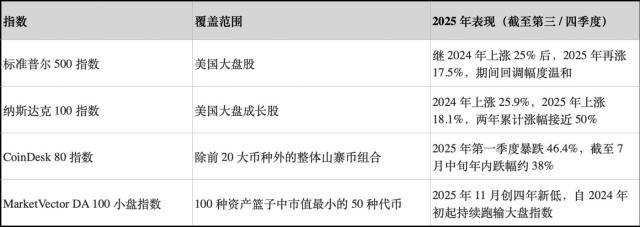BTC has continued to rise since the low point of $81,500 last night, reaching $87,000 again this morning after the Federal Reserve's interest rate decision meeting. The panic sentiment seems to have gradually subsided, and the market's lowest point is slowly passing. In the past 24 hours, a total of 101,662 people have been liquidated globally, with a total liquidation amount of $353 million, mainly short positions. BlockBeats has collected some community members' views on the market's rise and summarized three reasons for the rise.

The Federal Reserve Turns Dovish: The Liquidity Floodgates Open
The Federal Reserve's monetary policy plays a critical role in the crypto market. On March 20, the Federal Reserve decided to keep interest rates unchanged at 4.25-4.50% and released a dovish signal, hinting that a rate cut may come later this year as inflation data slows and economic growth concerns increase. This was in line with market expectations. It also announced a significant slowdown in the pace of balance sheet reduction "QT", easing market liquidity pressure. Federal Reserve Chairman Powell reassured investors that the risk of recession is not high, and the US economy remains strong, with the job market still solid.
The dovish Federal Reserve has lowered the opportunity cost of holding non-yielding assets, pushing funds from low-yielding bonds to risky assets. Today's rally may reflect that institutional investors and ETF providers are reallocating funds to Bitcoin, as they expect monetary conditions to become more accommodative. With liquidity flowing into the market, Bitcoin's price has broken through resistance levels, triggering investors' FOMO (fear of missing out) psychology.
In fact, the bullish sentiment of institutions seems to have returned, even though Bitcoin has fallen 11.4% in the past 30 days. BlackRock has shown renewed confidence in BTC. The world's largest asset manager recently added 2,660 Bitcoin to its iShares Bitcoin Trust IBIT, the largest inflow to the fund in the past six weeks. After a period of uncertainty in fund flows since early February, this significant purchase indicates that institutions are positioning themselves for potential upside as market conditions evolve.
Market analyst "IncomeSharks" believes that Bitcoin is rebounding from the super-trend support level and still maintains a buy signal. Looking back at BTC's performance at the OBV (On-Balance Volume) resistance level and the diagonal resistance level, the follow-through at the arrow is a clear bullish signal.
Note: OBV is a technical analysis indicator that uses trading volume flow to predict changes in stock or cryptocurrency prices. OBV increases on up days and decreases on down days, forming an accumulation line that reflects buying and selling pressure. As institutional activity increases and market volatility intensifies, investors will pay more attention to volume-based indicators.

Arthur Hayes also posted on social media that Powell has stated that quantitative tightening "QT" will essentially end on April 1. The market now needs a real bullish signal, either a supplementary leverage ratio "SLR" exemption or a restart of quantitative easing "QE". Bitcoin's $77,000 is likely the bottom.
RSI Oversold, Panic Sentiment Decreasing
As of March 2025, Bitcoin's futures funding rate has remained negative for several months, indicating that leveraged traders are heavily bearish, but this also creates a potential springboard for the uptrend. Negative funding rates mean that short holders pay fees to long holders, which typically occurs during price declines or oversold conditions.
With the recent decline in panic sentiment, driven by stable gold prices, reduced trade war concerns, and positive crypto signals from Trump, Bitcoin is emerging from panic-driven consolidation. Historical data shows that negative funding rates often precede price rallies. Today's rally may be the result of longs accumulating at these "discounted" prices, as panic subsides and optimism returns, pushing prices higher.

Trader "MerlijnTrader" believes a Bitcoin rebound is imminent, pointing out that the RSI indicator is in oversold territory and Bitcoin has just touched an important bottom signal. Historically, each time this signal has appeared, BTC has experienced a strong rebound.

Global M2 Continues to Rise: Increased Appeal as Inflation Hedge
In early 2025, global M2 has been steadily rising due to the coordinated loose monetary policies of the Federal Reserve and the European Central Bank. This expansion, driven by low interest rates and bond purchases, reflects an environment where Bitcoin is emerging as a hedge against fiat currency devaluation.

With global liquidity increasing, Bitcoin's limited supply as a store of value is becoming more attractive, especially amid concerns over US dollar hegemony and Trump's tariff policies. Bitcoin theoretically can offset the erosion of asset values by inflation, and today's rally may reflect institutional and retail investors flocking to BTC as a hedge against rising M2, driving prices to new highs.
Analyst Crypto Raven "hiRavenCrypto" believes that the comparison between M2 and BTC price is usually proportional. But a gap has recently appeared, indicating that BTC price has not caught up with M2 yet. This suggests an imminent $BTC price surge, potentially reaching at least $100K.

Although uncertainties remain, with the Federal Reserve's dovish signals, the current market has shown clear signs of a bottom: institutional return, oversold RSI, negative funding rates, and technical indicators bouncing back. The active accumulation by large institutions like BlackRock, as well as more government entities "Arizona just passed two BTC reserve bills yesterday" considering Bitcoin reserves, are signs of returning market confidence.
Welcome to join the official BlockBeats community:
Telegram subscription group: https://t.me/theblockbeats
Telegram discussion group: https://t.me/BlockBeats_App
Twitter official account: https://twitter.com/BlockBeatsAsia







